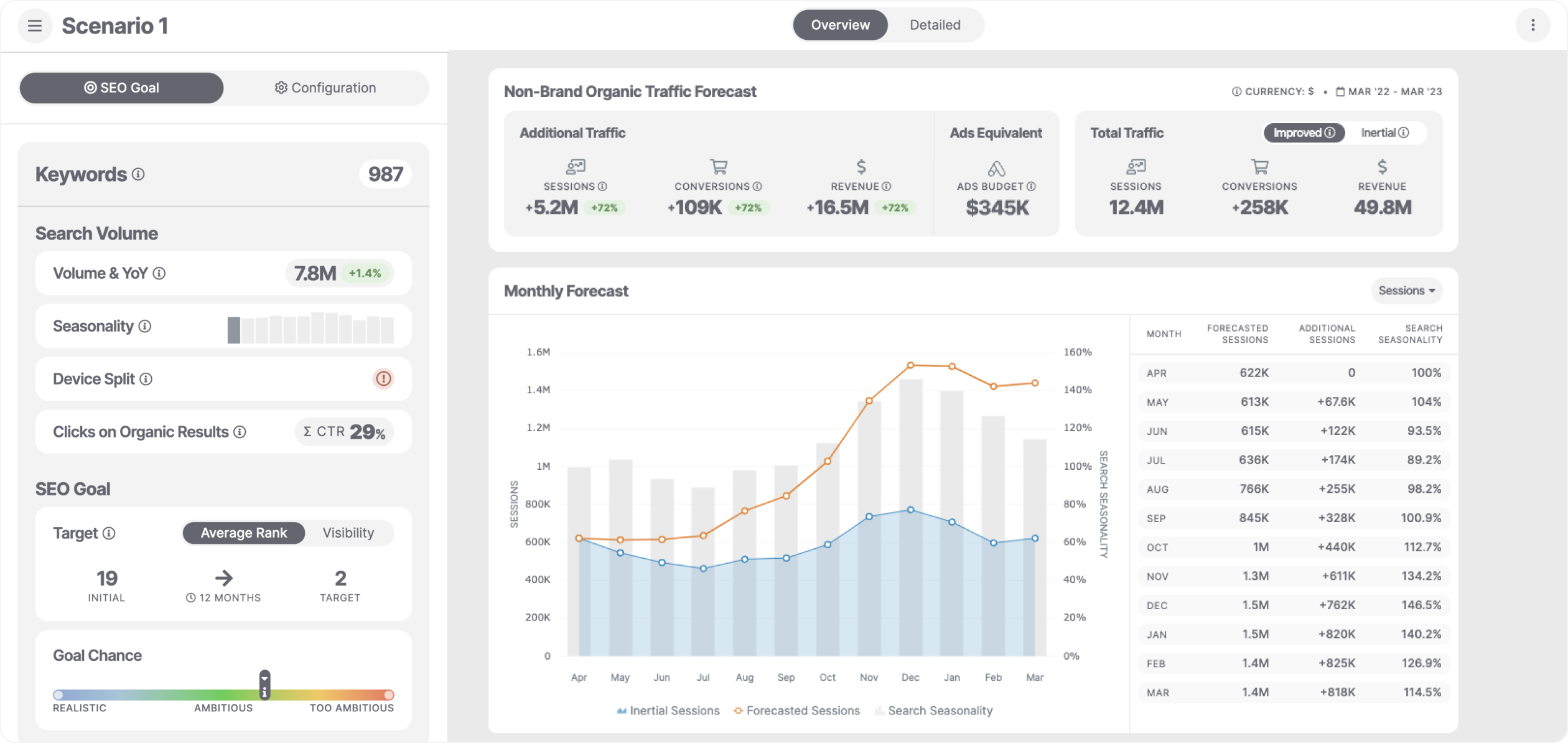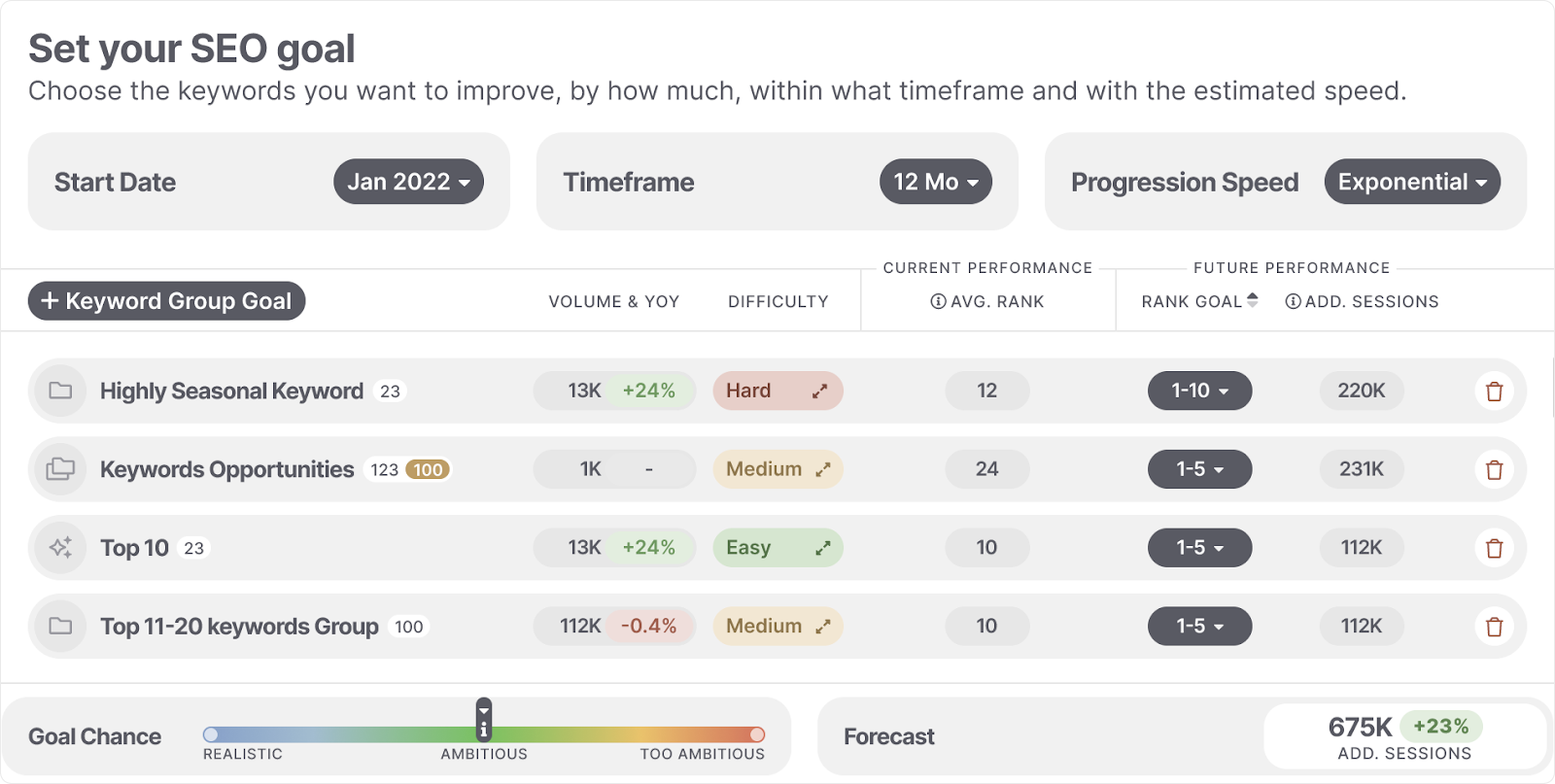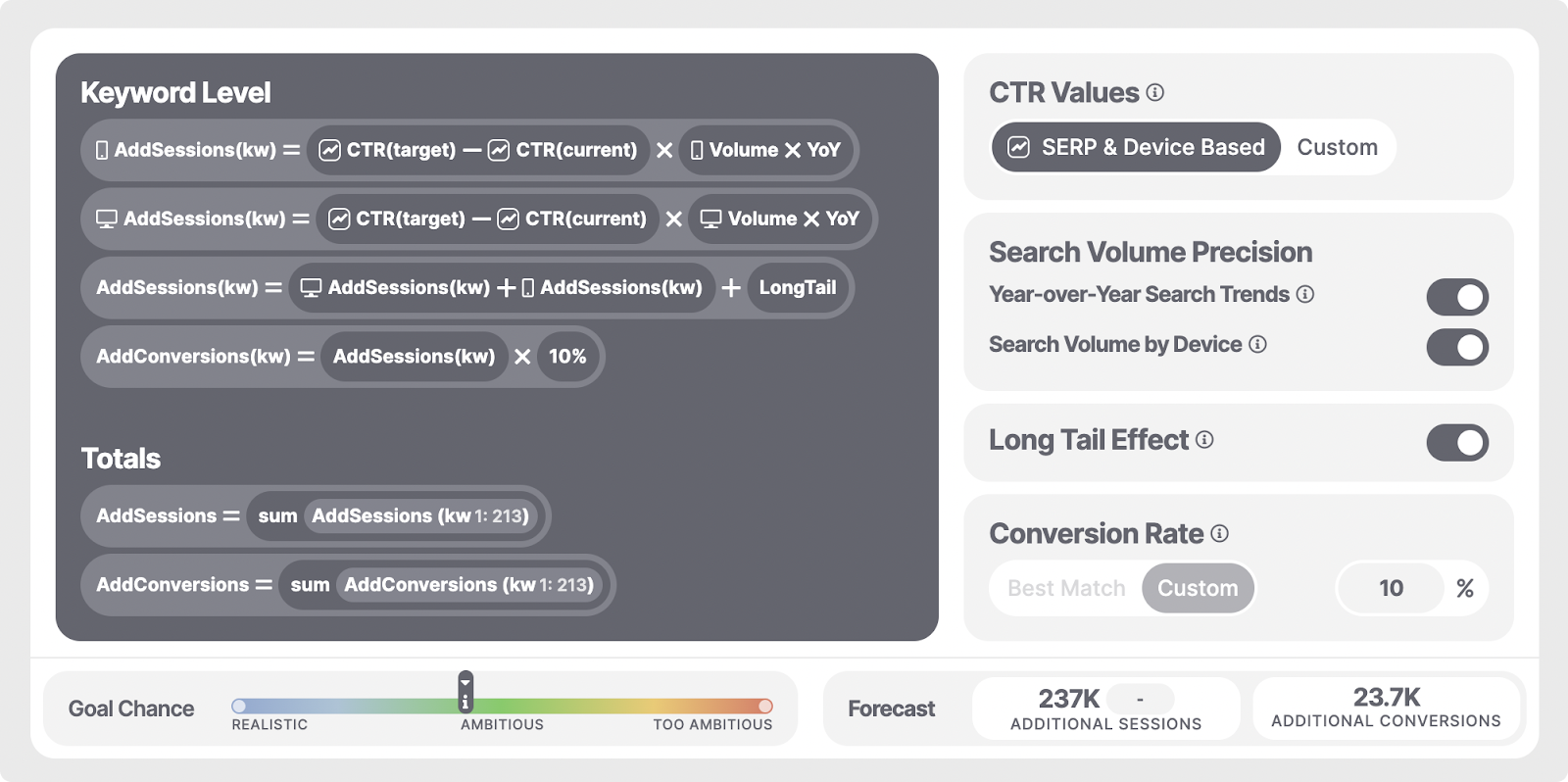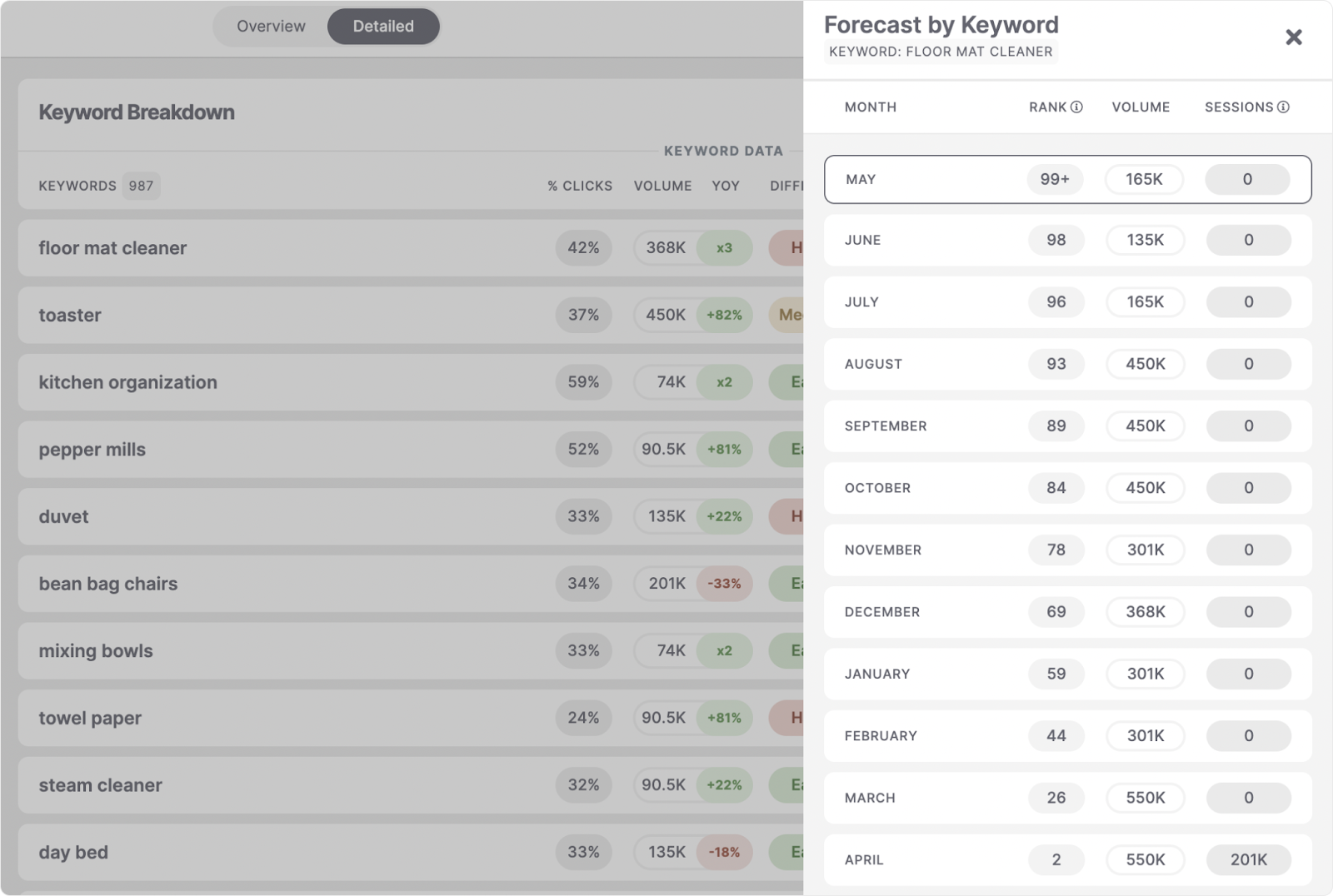We’ve completely redesigned the SEO Forecast product with our SEO agency users in mind. The 3.0 version is focused on ease of understanding and a step-by-step guide through our methodology — so you know how everything connects and impacts the final forecast scenario.

Introducing the Setup Assistant
With the new Setup Assistant, you create a forecast scenario by following the next steps:
1. Set the SEO goal
You get to select the keyword groups you want to forecast for and their targeted ranks, the timeframe, and your desired progression speed.
Even at this stage, you can see the estimated additional sessions based on your choices and on your website’s SEO difficulty to reach the target rankings of the selected keywords. Updated in real-time.

2. Adjust the algorithm
In this second step, you can control which of the key variables impacting keywords you want to include in your data modeling. You’ll see, in real-time, how they affect your chance of reaching the set goal, plus additional sessions and conversions.
Our forecasting methodology takes into account all the key variables needed for a reliable scenario. You choose which ones you want to select and even customize:
- The average CTR curve: The first critical variable of an SEO forecasting model is the clickthrough rate for each position in the Top 10. Based on our research, each keyword’s CTR curve significantly changes based on SERP features and device mix. That’s the data our model uses.
- Search volume, Year-over-Year trends, and Seasonality: The second important variable in the SEO forecast model is the accuracy of the search volumes used. Our model takes into account the keyword’s monthly seasonality and their Year-over-Year search trend.
- Device segmentation: Different search volumes and CTR curves based on device will yield different results. So considering how many searches are done on mobile devices and applying their corresponding CTR is another key factor in the model’s precision.
- Past conversion rate: Not all keywords have the same conversion rate, so we don’t treat them equally. Our model uses each keyword’s conversion rate when available. When it’s not available, the model uses the average conversion rate of the non-brand organic traffic.
- The Long-Tail Effect: Your targeted keywords and their improvement will impact other related keywords, not included in your scenario. With the Long-Tail Effect enabled, you’ll see how those keywords contribute to the estimated improved traffic.
3. Review the scenario
Once everything is adjusted, you’ll get a scenario with the non-brand organic traffic estimated month by month and its impact on sessions, conversions, etc. You can still review the configuration at every level of granularity, including the keyword breakdown.
Formulas revealed
We’ve gone the extra mile for you to check the formulas for each variable and see how they change based on your selection.
So when adjusting the algorithm, you’ll discover how each formula changes and how that affects your scenario and estimated results.

You’ll know how all the data comes together even before reviewing the full scenario.
All-granular view: Forecast by keyword
Go to the final level of granularity.
In the detailed keyword view, where you can understand how a certain keyword affects your potential overall results, now you can see how the keyword can perform month by month.
Taking into account your set ranking target and the formulas, you’ll see an estimation of monthly search volume, achieved rank, and additional sessions for each keyword in your scenario.

Integrated with Organic Traffic
The SEO Forecast and Organic Traffic products are seamlessly integrated.
That’s why, once you’ve agreed on a scenario and set it as an objective in the platform, you’ll be able to plot estimations versus actual non-brand organic traffic.

Integrated with the Agency Dashboard
Never lose track of your SEO objectives.
In your Agency Dashboard, you’ll always see the status of every campaign and its objectives: whether on track, behind, or at risk — data that also feeds the Client Health metric.

So you can act promptly whenever there’s an issue and keep your clients satisfied.
The new Forecast will not just highlight how your SEO proposal can impact the client’s business, but will also look better in your pitch decks.